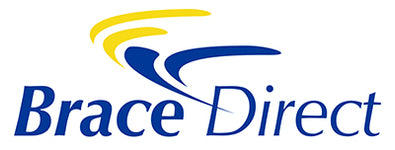
Patellar Tracking: Stabilizing Your Kneecap for Pain-Free Movement
The patella plays a crucial role in knee function, sliding within the trochlear groove as you bend or straighten your leg. When this tracking is off—whether due to overuse, muscle imbalance, or misalignment—you may experience runner’s knee, patellar tendonitis, or generalized knee pain. At Brace Direct, we offer patellar tracking knee braces designed to guide your kneecap into proper alignment, easing pain and reducing the risk of further injury.

Common Causes of Patellar Tracking Problems
Poor kneecap alignment can stem from several factors, including:
- Overuse & High-Impact Sports: Repetitive jumping (jumper’s knee) or running (runner’s knee) strains patellar tendons and alignment.
- Muscle Imbalances: Weak or tight quadriceps, hamstrings, or hip muscles can pull the patella out of place.
- Structural Variations: Knock-knees or flat feet might disrupt how the kneecap tracks with each step.
- Previous Injuries: Ligament tears or cartilage damage can shift knee mechanics, affecting patellar motion.
- Post-Surgery Recovery: After procedures involving the patella or tendons, targeted bracing helps restore correct tracking.
Symptoms often include aching under or around the kneecap, especially during stair use, squatting, or prolonged sitting with bent knees.
How Patellar Tracking Braces Provide Relief
A knee brace that supports the patella can make everyday activities less painful by:
- Guiding the Kneecap: Patellar buttresses or straps encourage correct tracking in the trochlear groove.
- Reducing Inflammation: Compression helps moderate swelling around tendons and soft tissues.
- Stabilizing Weakened Areas: If muscular imbalances or previous injuries cause misalignment, bracing offers extra support.
- Promoting Faster Recovery: By limiting stressful movements, braces give irritated structures time to heal.
Whether you’re coping with runner’s knee, jumper’s knee, or general patellofemoral discomfort, the right brace can significantly enhance both comfort and function.
Top Braces for Patellar Tracking & Alignment
These knee braces provide targeted patellar support, helping reposition the kneecap and reduce pain:

Breg Neoprene Knee Support (Open Patella)
Features a cutout around the kneecap to reduce direct pressure while supporting alignment—ideal for mild tracking issues or patellar tendonitis.
Shop Now
Breg FreeSport Knee Brace
A lightweight, supportive design with lateral guides to stabilize the patella, reducing pain for active individuals dealing with runner’s knee or chondromalacia.
Shop Now
Breg 20.50 Patellofemoral Brace
Offers firm, customizable patella stabilization with an adjustable buttress. Ideal for moderate-to-severe patellar tracking issues and overuse conditions.
Shop NowRestore Your Kneecap Alignment & Move Confidently
Don’t let patellar tracking problems sideline you. Our braces address kneecap misalignment, reducing front-knee pain and supporting a healthier range of motion. For personalized sizing and a tailored fit, discover our Perfect Fit Promise or shop the entire patellar tracking collection below.
Shop Patellar Tracking Braces








